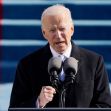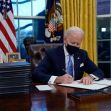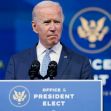President Biden issued executive orders on his first day in office aimed at minimizing climate change and protecting human health and the environment. Not coincidentally, he reversed multiple Trump initiatives and restored or expanded some Obama initiatives. His mandates, set forth in an executive order, will require multi-month reviews of various regulations and crafting new or revised regulatory rules in light of the results. The title of the executive order in question: “Executive Order on Protecting Public Health and the Environment and Restoring Science to Tackle the Climate Crisis.”
The Keystone XL Pipeline
In section six of the order, Biden revoked the cross-border permit for the Keystone XL Pipeline granted March 29, 2019, by then-President Trump. Biden’s reason for issuing the order was that the Pipeline, a TC Energy Corp. project, conflicted with the goals of asserting U.S. global leadership in the climate change charge and of reducing greenhouse gases.
In response, Andy Black, president of the Association of Oil Pipe Lines, said, “Killing 10,000 jobs and taking $2.2 billion in payroll out of workers’ pockets is not what Americans need or want right now.” Mike Sommers, president of the American Petroleum Institute, said, “Today’s announcement is a slap in the face to the thousands of union workers who are already a part of this safe and sustainable project.”
Since news of Biden’s planned executive order was public before the event, Alberta, Canada, Premier Jason Kenney voiced concern about the impact of the order on his Canadian province and Canada as a whole. He expressed his fear in a press conference, worrying that Biden would economically damage a friendly neighboring nation pointlessly, since blocking a source of crude oil just shifts the supply elsewhere. He said that if the U.S. has no access to energy from a close democratic ally, “it becomes more dependent on foreign oil imports from Venezuela and other OPEC dictatorships in the future.”
The 1700-mile (or 875-mile or 1200-mile, depending on who you ask) pipeline was intended to take millions of gallons of a heavy crude oil mixture from Alberta in Western Canada to Steele City, Nebraska. From there, another connection would take the oil to the pipeline hub in Cushing, Oklahoma. A 2014 11-volume State Department report on the Keystone XL pipeline found it would not significantly contribute to carbon pollution, but opponents say the project threatens Alberta’s forests and rivers. Opponents on the northern side of the border are wary of oil spills, spoilage of indigenous people’s lands, and the careless spread of COVID-19 by workers.
The oil from Canada was to come from tar sands, or oil sands, which are a mixture of sand, clay, water and bitumen. The extraction process is expensive and requires more energy than other oil sources. A UK Greenpeace campaigner and oil industry analyst, Charlie Kronick, said, “Tar sands are not compatible with a future that deals with climate change in any meaningful way.” Biden has also said, “It is tar sands that we don’t need that in fact is a very, very high pollutant.”
The Obama State Department denied TC Energy’s request for a permit in 2015. Trump revived the project by approving it with an executive order. Construction began in April 2020, but in the same month a federal court required the project to undergo a full endangered species review. Though the court decision was appealed by TC Energy, the Supreme Court upheld the decision in July.
Canada’s Prime Minister, Justin Trudeau, said, “While we welcome the President’s commitment to fight climate change, we are disappointed but acknowledge the President’s decision to fulfill his election campaign promise on Keystone XL.” Conversely, Premier Kenney of Alberta said, “The government of Canada must impose meaningful trade and economic sanctions in response to defend our country’s vital economic interest.” He suggested that legal action would be taken if diplomatic efforts were unsuccessful.
Kevin Book, an analyst at ClearView Energy Partners, said, “Where things really come down in the end is, if this is really the hill Trudeau wants to die on. As painful as it may be for western Canada, there are minds in the Great White North that are looking to greener technologies and are innately skeptical of the oil sands.”
To date, only 1.2 miles of the pipeline had been completed in Montana near the Canadian border. The project has cost about $8 billion so far.
Additional Environmentally-Friendly Elements of the Executive Order
Biden’s new executive orders require executive agencies to review 103 Trump-era actions on public health and the environment. The executive order about the Keystone XL Pipeline was lengthy and had many components. Among these were:
• Regarding the new source performance standards (NSPS) for controlling methane emissions from the gas and oil exploration and production sector: EPA has until September to propose a rule that will suspend, revise, or rescind the Trump administration’s approach.
• EPA has until September to propose new standards for the control of volatile organic compounds and methane from gas and oil storage, processing, transmission, production and exploration.
• The Department of the Interior was directed to stop leasing program activities on the coastal plain of the Arctic National Wildlife Refuge and, “in light of the alleged legal deficiencies underlying the program,” start a new environmental impact statement.
• The restrictions on offshore gas and oil leasing Obama had put in place for much of U.S. Arctic waters and the Bering Sea were lifted by Trump; they are reinstated.
• A working group will be created that will establish an accurate system for determining the “social cost” of nitrous oxide, methane, and carbon emissions. All agencies must take greenhouse gas emissions and accompanying global damages that may come from policies and projects into account in their regulations.
• EPA has an August deadline for proposing new rules to rescind, revise or suspend the Trump administration’s national emission standards for hazardous air pollutants from coal-fired and oil-fired power generators.
• Trump administration policy on “consistency and transparency” in Clear Air Act cost-benefit analyses must be reconsidered by the EPA “as soon as possible.”
• Two Trump rules on fuel efficiency standards for vehicles that undermined the Obama administration’s ambitious efforts must be reconsidered by the EPA.
• The Energy Department was tasked with reconsidering appliance efficiency and building efficiency standards.
• The Trump administration changed the boundaries of three national monuments - Northeast Canyons and Seamounts, the Bears Ears, and Grand Staircase—Escalante monuments. The Interior Department must consider restoring those boundaries.
Gas and oil companies lost interest a few decades ago in looking for oil and gas at Bears Ears and Grand Staircase-Escalante. Both Utah areas had been extensively explored, with only dry holes in the Bears Ears area and one small oil field in the Grand Staircase-Escalante area.






